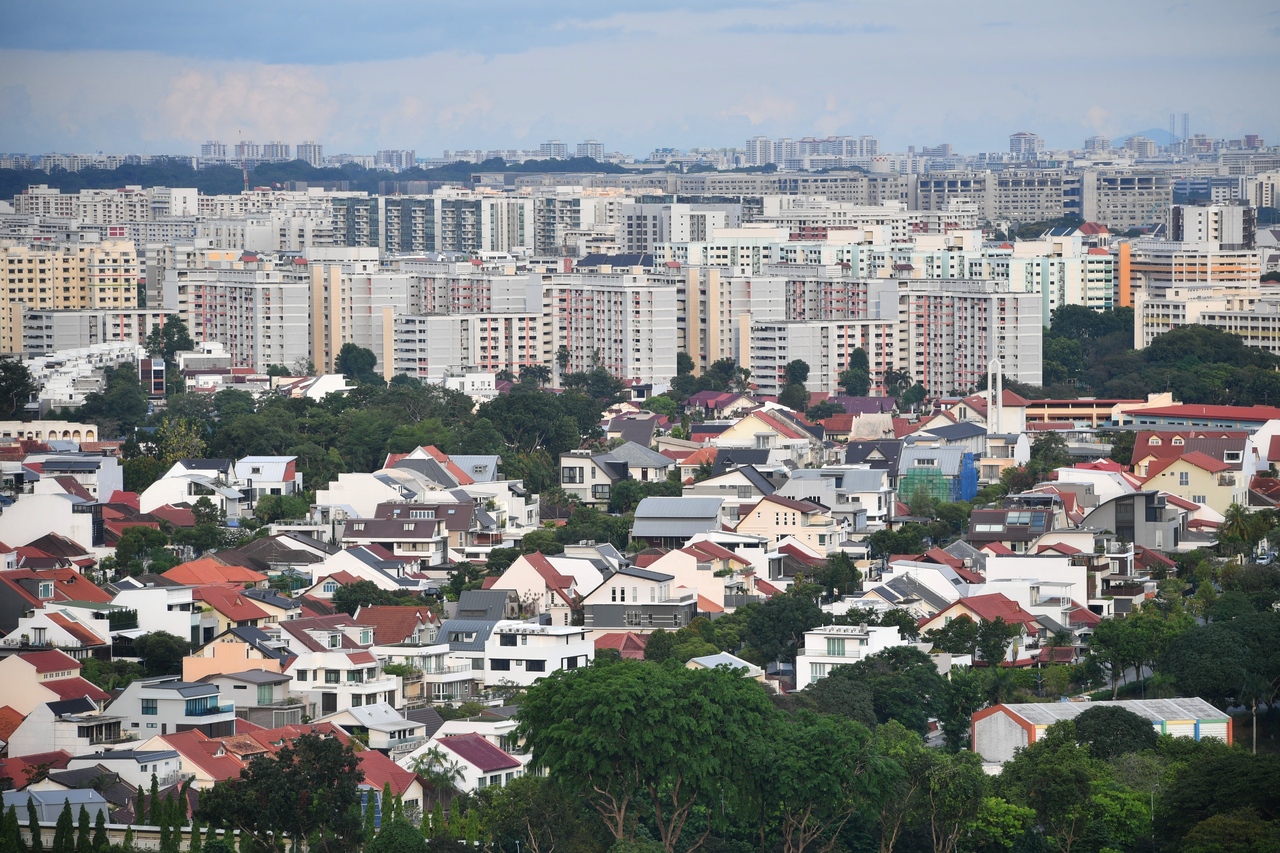Singapore private home price growth slows to 0.8% in Q2 amid tighter Covid-19 measures
Sign up now: Get ST's newsletters delivered to your inbox

Year on year, private home prices in Singapore are up by 7.1 per cent.
ST PHOTO: CHONG JUN LIANG
Follow topic:
SINGAPORE - Singapore's private home prices grew at a much slower pace in the second quarter this year, due to a pullback in landed housing prices and fewer new launches amid tighter Covid-19 restrictions.
Private residential prices rose 0.8 per cent quarter on quarter - easing from a rise of 3.3 per cent in the first quarter and 2.1 per cent in the fourth quarter of last year, according to data from the Urban Redevelopment Authority (URA) on Friday (July 23).
This is slightly below the flash estimate of a 0.9 per cent rise. Year on year, prices are up by 7.1 per cent.
Sales of new non-landed homes, excluding executive condominiums (ECs), fell 15 per cent in the second quarter to 2,966 units, from 3,493 units in the first quarter.
The tighter restrictions from May 16 to June 13 slowed new launches last month. Even though showflats were allowed to open, developers did not rush to launch as many buyers stayed away, said Mr Wong Xian Yang, the Singapore head of research at Cushman & Wakefield.
Consequently, 2,356 new private homes were launched in the second quarter, 37 per cent lower than the 3,716 units placed in the previous quarter, but still 27 per cent higher than a year ago when the circuit breaker was in effect.
With Singapore reverting to phase two (heightened alert) from July 22 to Aug 18, some launches that had been planned for this month - such as The Watergardens at Canberra and Parc Greenwich EC - have been deferred, said PropNex chief executive Ismail Gafoor.
But he does not expect this and the ongoing pandemic to dampen demand significantly, even though it may create some uncertainty over new launches next month.
Demand should remain healthy, supported by Singapore's projected recovery and a better employment market, along with continued interest from HDB upgraders, said Cushman & Wakefield's Mr Wong.
Notably, resale transactions were robust in the second quarter, as buyers have had to turn to this market amid construction delays and held-back new launches. With 5,333 units sold, resale deals took up 63 per cent of total sales in the second quarter.
Resales, which jumped 18 per cent from the previous quarter, are at the highest level since 5,809 units were transacted in the third quarter of 2009, Mr Wong said.
But Ms Christine Sun, senior vice-president of research and analytics at OrangeTee & Tie, noted that rising home values have triggered a slight slowdown in some locations.
"The pullback in demand was within expectations since the overall price index has increased for five consecutive quarters," she said.
In terms of property type, prices of landed properties dipped 0.3 per cent in the second quarter, compared with a sharp 6.7 per cent increase in the first quarter.
Prices rose at a slower pace for condominiums and apartments, rising 1.1 per cent in the second quarter, compared with a 2.5 per cent increase in the previous quarter.
HDB upgraders helped fuel price gains in the suburbs or outside central region (OCR), which rose 1.9 per cent, compared with a 1.1 per cent gain in the previous quarter.
Meanwhile, prices in the prime or core central region grew 1.1 per cent in the second quarter, compared with a 0.5 per cent rise in the first quarter, boosted by high unit prices of new launches. Park Nova - a 54-unit luxury project moved 13 units at a median price of $4,971 psf during the second quarter, Mr Wong said.
Prices in the city fringe or the rest of central region saw the slowest growth, edging up just 0.1 per cent, compared with a 6.1 per cent rise in the previous quarter. This was due to a drop in new sales to 1,123 units in the second quarter, from 1,798 units in the previous quarter.
As for the rental market, landlords were able to command higher rents in recent months, thanks to limited available stock and new home construction delays.
Overall, private home rents climbed 2.9 per cent in the second quarter, compared with a 2.2 per cent increase in the first quarter.
Rents of non-landed properties rose 3.1 per cent, compared with a 2.4 per cent increase in the previous quarter. Rents in the prime and city fringe areas grew 3.1 per cent and 2.8 per cent respectively.
The strongest rental growth was in the suburban area, which jumped 3.6 per cent, said Mr Nicholas Mak, head of research and consultancy at ERA Singapore.
"Many buyers of suburban condominiums are HDB upgraders. Since the start of the pandemic, about 40 per cent of the uncompleted private housing sold were in the OCR. However, with completion of their new homes delayed, they have to rent," he said.

